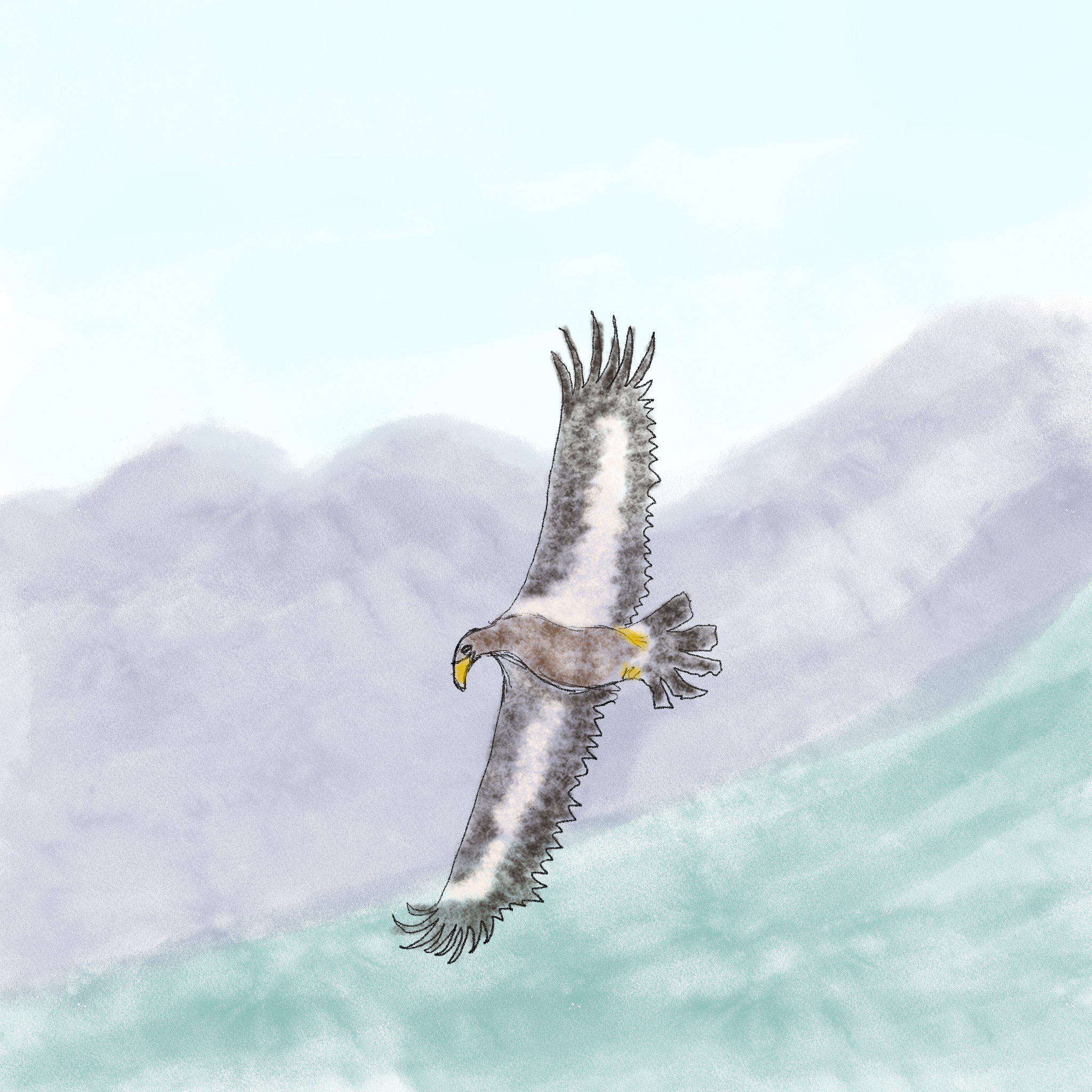101: Golden Eagles
Five countries have them on their flags - more than any other animal!
You might see them soaring above mountains, deserts, and cliffs, their huge wings outspread in a slight V and the feathers at their tips extended like fingers. Although there are fifty-nine eagle species worldwide, only two live in North America, and the golden eagle is the largest. They have a wingspan of around seven feet, with a three foot long body. They live year round in much of Colorado, though they only spend their autumns and winters on the eastern plains before moving west/south to nest. Colorado Parks and Wildlife recommends February as the best time to see them. Young ones, like the one depicted below, have some white feathers near the base of their tail, but when they are around three they will have almost entirely dark brown feathers that stay that way for the rest of their life.
Golden eagles primarily eat rodents, such as previous stars of this newsletter: rabbits and prairie dogs. Their eyes have evolved to be able to see extremely fine details up to two miles distant, which aids them in their quest for small animals. However, they do have the ability to kill much larger prey. They also don’t work that hard for their meals – a study in Idaho found that they spend around 80% of available daylight perching or resting.
Their desire to eat mammals has saved them from the horrors of DDT, which nearly wiped out Bald eagles – since the pesticide concentrates in fish, rather than mammals, Golden eagles did not have their egg shells thinned by exposure to the poisonous chemical. However, Golden eagles are victims of habitat destruction. Shockingly, Highlands Ranch is a nice place for them to live because of its mix of dense housing and open green spaces.
Golden eagles play an important role in many indigenous traditions throughout North America. The eagle depicted on the Mexican flag – symbol of the Mexica (Aztec) people – is a golden eagle. Closer to Colorado, a cliff face near Thermopolis, Wyoming, features a petroglyph of a golden eagle.
